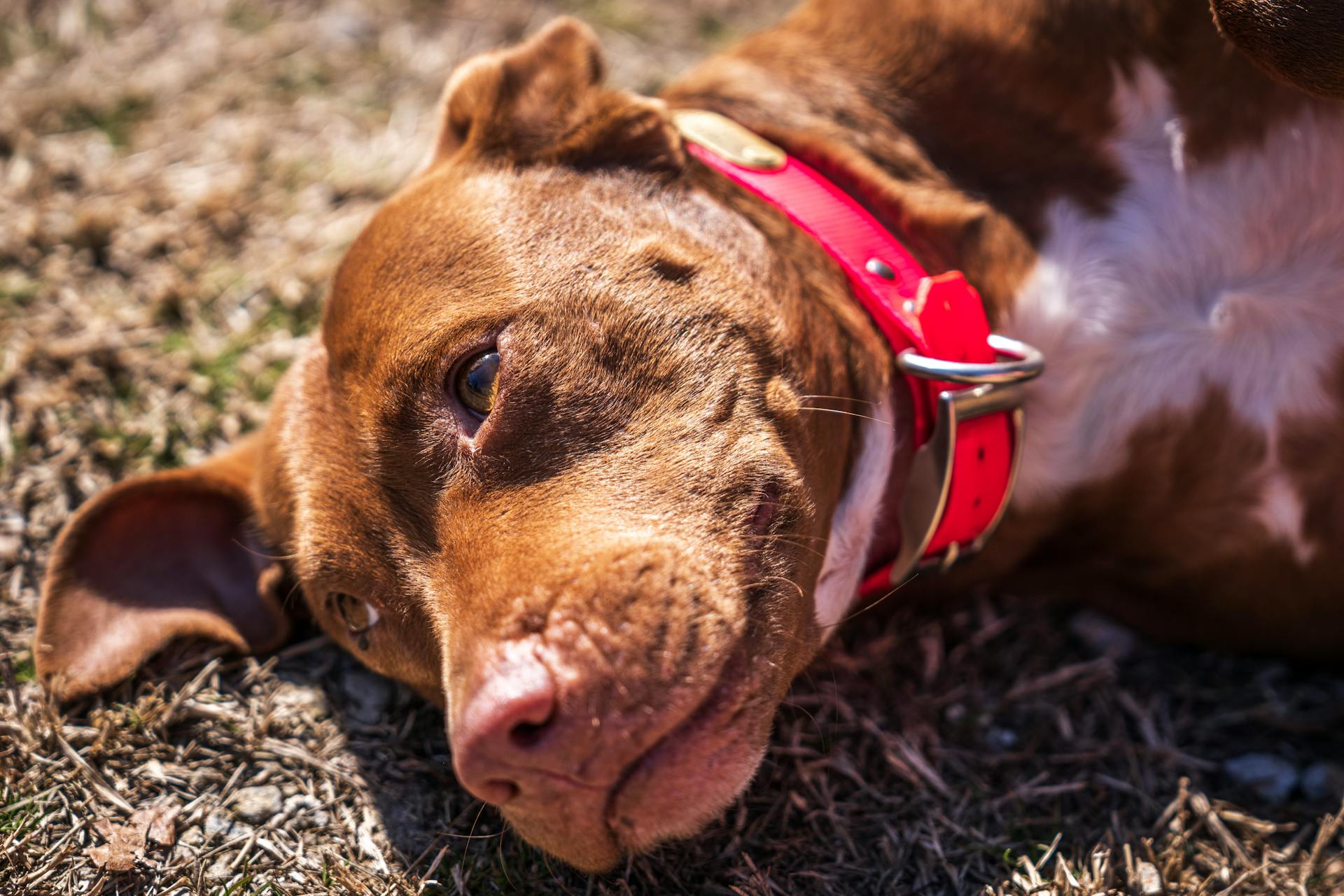
The American Pit Bull Terrier is a versatile breed that originated in England in the 19th century. They were initially bred for bull-baiting, but after the practice was outlawed, they became popular family pets.
The American Pit Bull Terrier is a medium-sized breed, typically weighing between 35-60 pounds and standing between 17-20 inches tall at the shoulder. They have a short, smooth coat that requires minimal grooming.
One of the most distinctive characteristics of the American Pit Bull Terrier is their muscular build and athletic ability. They are natural athletes and excel in dog sports like agility and obedience.
Their friendly, outgoing personalities make them a great breed for families with children.
Quick Facts
The Pit Bull breed is a medium-sized dog with a short, smooth coat that comes in a variety of colors, including black, brown, white, brindle, and red.
Here are some key facts about the Pit Bull breed:
- Origin: United States
- Breed Group: Terrier (Recognized by the United Kennel Club)
- Size: Males stand 18-19 inches tall at the shoulder and weigh 35-60 pounds; females stand 17-18 inches tall and weigh 30-50 pounds
- Lifespan: 12-14 years
- Exercise needs: Moderate; needs at least 30 minutes of exercise per day
- Grooming: Low-maintenance; brush once a week
- Health: Prone to hip dysplasia, elbow dysplasia, and allergies
The Pit Bull is a friendly and outgoing breed, known for its affectionate, loyal, playful, and intelligent nature.
Breed Characteristics
Pit bull-type dogs are notoriously determined and won't give up easily on a task. They're also known to love people, including strangers, and crave attention.
Their size and strength can be difficult to handle if they're not properly trained and socialized from a young age. They might pull hard on a leash or jump up on people to greet them.
Pit bull-type dogs typically have muscular, stocky builds with deep chests and large, square heads.
Temperament
Pit bulls are confident and strong-willed, eager to please and learn new things. They can be a bit stubborn at times, but with the right training and socialization, they thrive.
One of the best things about pit bulls is their loyalty. They bond deeply with their owners and are very loyal companions. I've seen it myself - pit bulls will follow their owners anywhere and always want to be close by.
Pit bulls are also very energetic and love to play. They enjoy activities like running, swimming, and even just playing fetch in the backyard. They're natural athletes and need regular exercise to stay happy and healthy.
Here are some key temperament traits of pit bulls:
- Confident, strong-willed, and eager to please
- Very loyal and bond deeply with owners
- Energetic and enthusiastic, enjoys activity and play
- Often very friendly with people
- Less dog aggression than commonly thought
Overall, pit bulls are a wonderful breed that make great companions for active families. With the right care and attention, they can be a loving and loyal friend for years to come.
Bully
The Bully breed is a fascinating one. The American Bully was first recognized in the 1990s.
They have a distinct physical appearance, with a thick, muscular build on a shorter body than other breeds. This breed comes in four size varieties, from pocket to extra large size.
The American Bully has a larger head with skin folds around the neck and wide-set eyes.
Suggestion: Most Popular Bully Breeds
Staffordshire
The Staffordshire breed is known for its gentle, loving nature, and they make great family pets. They are often referred to as "nanny dogs" due to their loyalty and affection towards children.
These breeds are relatively small and stocky, taking up less space than some of the larger American Bully breeds. They have a short, smooth coat that comes in a variety of colors, including red, fawn, white, black, blue, and brindle.
Staffordshire Bull Terriers have high energy levels and require a lot of mental and physical stimulation. They need active owners who can match their dog's needs to keep them happy and healthy.
Despite their history of being used for bull baiting and fighting, good breeding has made Staffordshire Bull Terriers even-tempered companions. They are muscular and courageous, but also gentle and loving.
The American Staffordshire Terrier and the Staffordshire Bull Terrier are two breeds that share many common characteristics, including their colorings and loving natures.
Consider reading: Staffy Mixed Breed
Weiler
The Weiler, a breed that's a mix of the Pitbull and Rottweiler, is a large and muscular dog that inherits strength and intelligence from its parents.
Their short coat can come in different colors depending on their genes, and they almost always have a deep nose and a big head with big teeth, giving them an intimidating look.
Weilers need a lot of physical exercise every day due to their large size, which means they require regular and intense activity to stay happy and healthy.
If you're considering bringing a Weiler into your family, be aware that they can be distant and may not always be friendly with children and smaller dogs, so proper socialization is key.
Discover more: How Big Do Pit Bulls Get
Physical Traits
Pit bulls are a medium to large breed, known for their muscular and stocky build. This physical characteristic makes them a sturdy and powerful dog.
Their blocky head shape is a distinctive feature, with strong jaws that are well-suited for their size. This head shape is a result of their breeding history.
Pit bulls have a short, smooth coat that comes in a variety of colors, including red, fawn, brown, black, and white.
Size
The American Pit Bull Terrier is a medium-sized breed.
Their height is quite impressive, with males reaching 18 to 19 inches and females reaching 17 to 18 inches.
Weight ranges from 30 to 85 pounds, which means they can be quite lean or stocky depending on their muscle mass.
Coat Color and Grooming
The American Pit Bull Terrier's coat is a stunning feature, coming in a variety of colors including red, blue, brown, grey, black, and white, as well as brindle.
Their short coat is shiny and stiff, requiring little grooming to maintain its shine. Brushing with a stiff brush and wiping down with a cloth will keep their coat looking its best.
Physical Traits
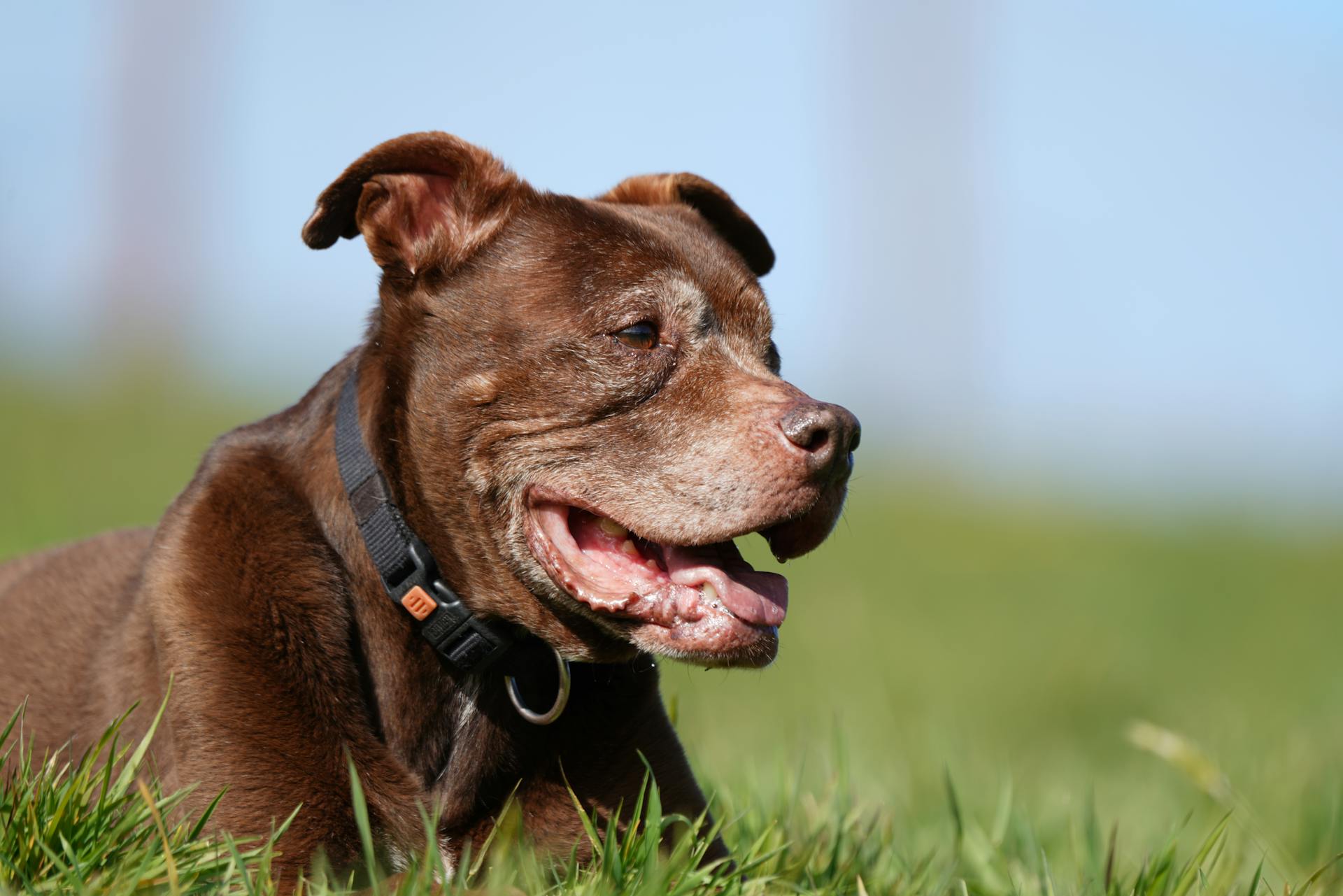
The physical traits of this breed are quite distinctive. They tend to be medium to large in size, with a muscular and stocky build.
Their blocky head shape is one of their most recognizable features, with strong jaws that give them a robust appearance.
Their short, smooth coat comes in a variety of colors, including red, fawn, brown, black, and white.
History and Background
The American Pit Bull Terrier has a rich history that dates back to 19th-century England, where it was bred for bull- and bear-baiting.
These early breeds were created by combining bulldogs and terriers, which is why the Pit Bull's genetic makeup is a mix of both.
In the early 20th century, the breed was developed to be a strong, protective dog known for being gentle and family-friendly.
Here are some key facts about the breed's history:
- Descended from Bulldogs and terriers
- Bred for bull baiting and later used for dog fighting
- Still often associated with aggression, though poor ownership and training play a major role
The breed's reputation for aggression stems more from its treatment than from its inherent temperament, and with caring human parents, Pit Bulls display all the typical devotion of other family dogs.
Background and History
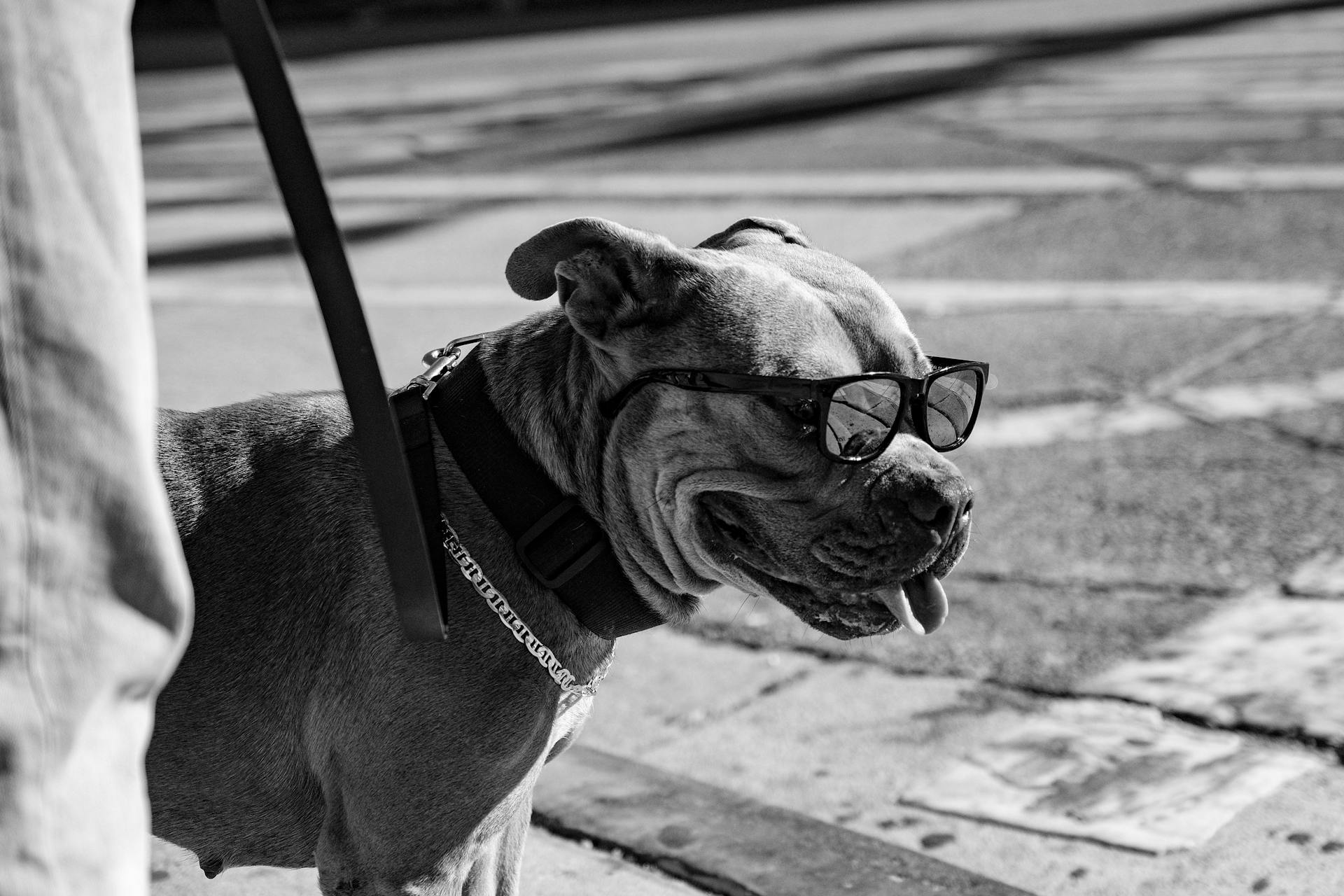
The American Pit Bull Terrier has a rich and complex history that's often misunderstood. They were originally bred in England for bull-baiting and later for dog-fighting due to their power and gameness.
Their reputation for aggression stems from their treatment, not their inherent temperament. With poor ownership and training, they can become aggressive, but with caring human parents, they display typical devotion like other family dogs.
Here are some key facts about their history:
- Descended from Bulldogs and terriers and bred for bull baiting
- Later used for dog fighting due to their power and gameness
- Still often associated with aggression, fighting, and danger, though poor ownership and training play a major role
In the 19th century, bull-baiting was outlawed in England, leading to dog-fighting becoming a popular spectator sport. The American Pit Bull Terrier's genetic makeup was influenced by this history, with a trait for dog aggression being bred in.
Sky
The Sky in the lives of Pitskys is quite something. Pitskys often have the Husky's blue eyes, a characteristic that's a result of their parentage.
These dogs are highly energetic, which means they don't like to sit still for long periods. They're a great match for families who enjoy outdoor activities like hiking or running.
Pitskys are a large breed, inheriting their size from their Pitbull and Husky parents. They require rigorous training due to their stubborn nature, so be prepared to put in the work.
Care and Ownership
American Pit Bull Terriers require regular exercise, about an hour a day, to keep them happy and healthy.
They need to be walked, played with, or otherwise exercised daily to prevent boredom and destructive behavior. This can be as simple as a short walk around the block or a game of fetch in the backyard.
To prevent them from becoming stubborn, begin obedience training early and continue it throughout their life. Training is the foundation for a strong relationship with your American Pit Bull Terrier.
American Pit Bull Terriers don't tolerate the cold well, so they should not be left outside for long periods. They do best as house dogs and form strong attachments to their families.
If you have children, American Pit Bull Terriers can make great playmates, but always supervise interactions and teach children how to interact with dogs gently and respectfully.
Intriguing read: Breeding Yorkshire Terriers
Health
As a responsible dog owner, it's essential to be aware of the potential health issues that can arise in your American Pit Bull Terrier. Hip Dysplasia is a common condition that can cause extreme pain, so it's crucial to have your dog's hip X-rays done at 2 years of age to ensure they don't have this condition.
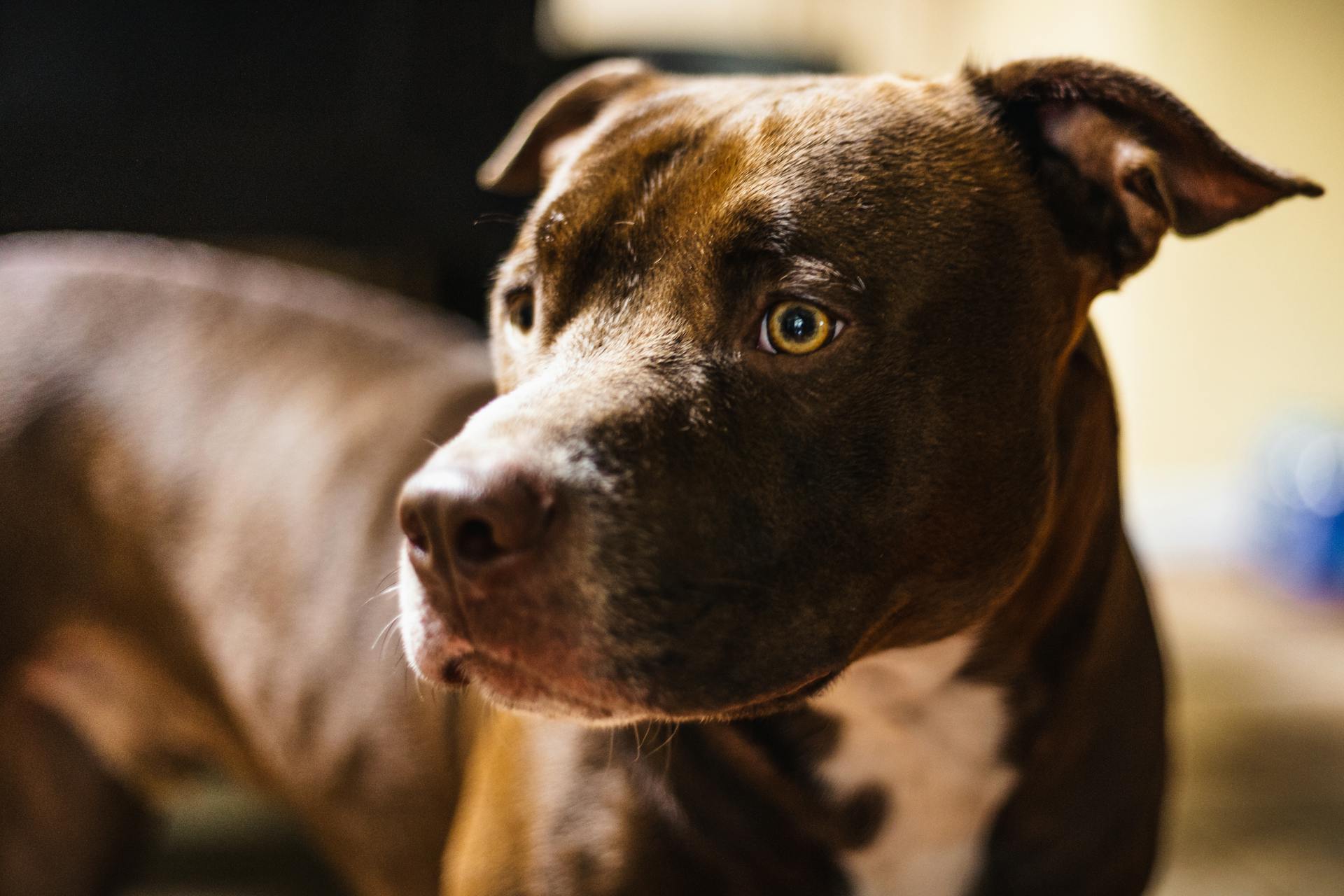
Allergies are quite common in APBTs, and they can be caused by environmental allergens like fleas, grass, pollen, and dust. Skin allergies can be intense and uncomfortable, leading to digging and chewing that can cause secondary infections.
Hypothyroidism is a dysfunction of the thyroid gland that can cause weight gain, poor coat, and reproductive problems. It's usually diagnosed in middle-aged dogs and can be controlled with daily medication.
Heart disease affects APBTs in several forms, with aortic stenosis being the most common. Aortic stenosis is a congenital heart defect that can cause little energy or even death.
Atopic dermatitis, or atopy, is a chronic inflammatory skin disease that affects approximately 10-15% of the canine population. It's usually triggered by an overreaction of the dog's immune system to environmental allergens.
Here are some common health issues to be aware of in your APBT:
- Hip Dysplasia
- Allergies (skin and food-related)
- Hypothyroidism
- Heart Disease (aortic stenosis)
- Atopic Dermatitis
Care
To care for an American Pit Bull Terrier, you'll need to spend about an hour a day walking, playing with, or exercising this dog.
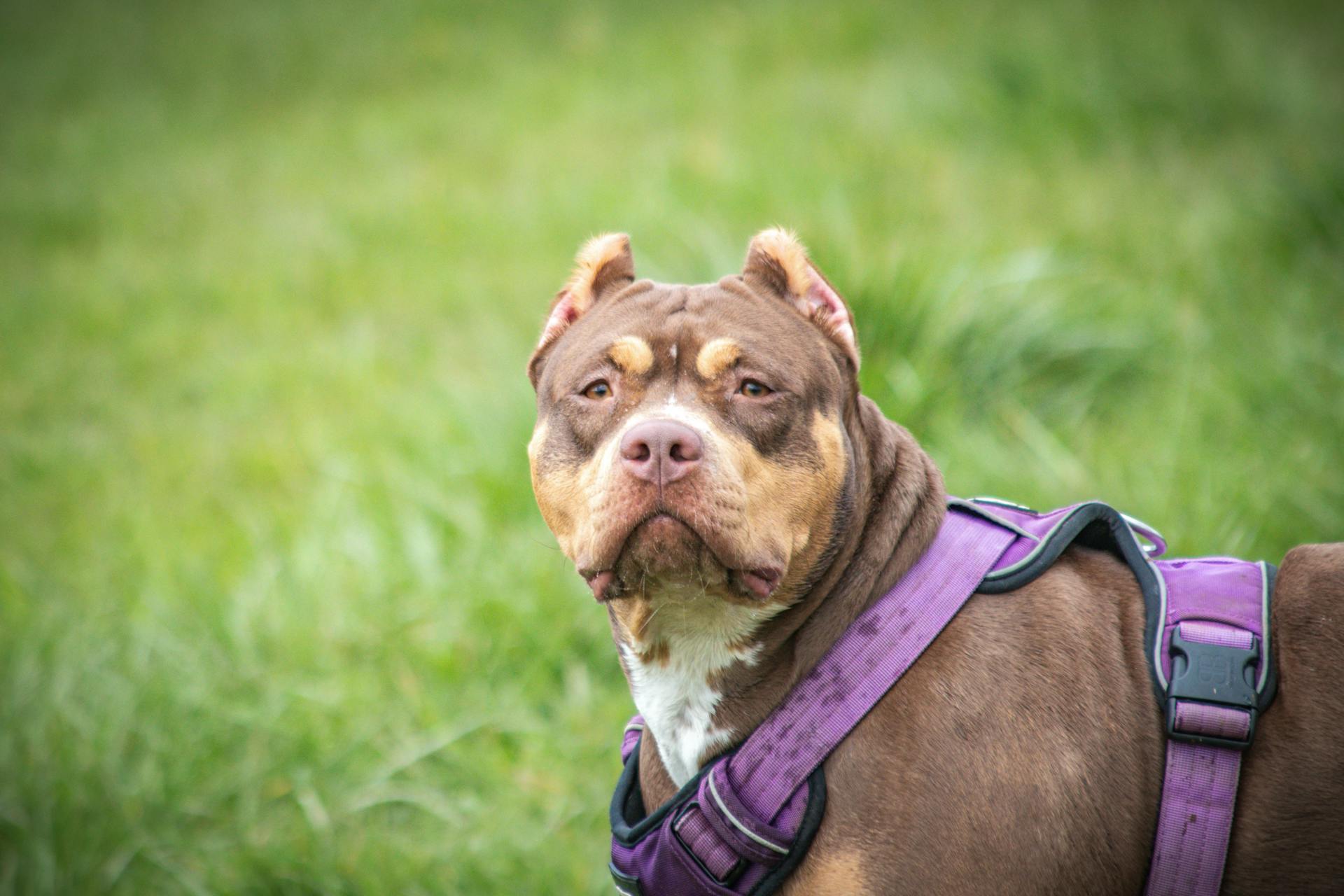
They're strong for their size and can be stubborn if left to their own devices, so it's essential to begin obedience training early and continue it throughout the dog's life.
Training is the foundation for a strong relationship with your American Pit Bull Terrier, and it's crucial for their well-being and happiness.
These dogs can't tolerate the cold well, so they do best as house dogs.
They form strong attachments to their families and will suffer if left alone for long periods.
Children and Pets
No dog of any size or breed should ever be left unsupervised with children.
American Pit Bull Terriers, in particular, love children and are ideal playmates due to their sturdy, energetic, and tolerant nature.
Dogs should be crated or kenneled when no adult can oversee what's going on, especially after they reach sexual maturity.
Teach children never to approach any dog while it's sleeping or eating, or to try to take the dog's food away.
Some American Pit Bull Terriers retain a tendency to be aggressive with other dogs due to their dog-fighting heritage, but early socialization and training can minimize or overcome this aggression.
Always supervise American Pit Bull Terriers in the presence of other pets, even if they are dog- and cat-friendly.
Frequently Asked Questions
What is the biggest breed of pitbull?
The American Pit Bull Terrier is the tallest and most athletic of the pit bull types, making it the largest breed of pitbull. This breed is a popular choice for those looking for a powerful and agile companion.
What kind of pitbull stays small?
Pocket Pitbulls, a hybrid breed, are a small version of the Pitbull, resulting from a cross between an American Pitbull Terrier and a Patterdale Terrier
What are the 4 breeds of Pitbulls?
The four breeds commonly classified as Pitbull types are the American Pit Bull Terrier, American Staffordshire Terrier, American Bulldog, and Staffordshire Bull Terrier. These breeds share similarities in appearance and ancestry, but each has its unique characteristics and traits.
Sources
- https://dogtime.com/dog-breeds/american-pit-bull-terrier
- https://fotp.com/learn/dog-lifestyle/breeds-of-pitbulls-an-extensive-list
- https://dogtime.com/reference/123967-5-types-of-pit-bull-dog-breeds
- https://www.thesprucepets.com/pitbull-dog-breeds-4843994
- https://spiritdogtraining.com/growth-chart-calculator/pitbull/
Featured Images: pexels.com


